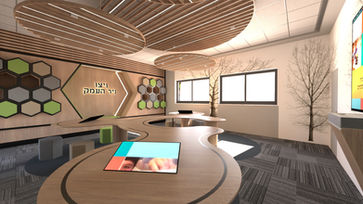Designing Experiential space
Museum design is a process of creating a physical space that presents art, artifacts, and other culturally significant items. It encompasses a variety of design elements, such as architecture, lighting, exhibition design, graphics, and multimedia. The design should serve the needs of the museum's collection and cater to the interests of visitors. Practical considerations, like safety, accessibility, and environmental impact, must also be taken into account.
Efficient museum design often involves the use of technology, such as interactive exhibits, audio guides, and virtual reality experiences. Collaboration with the museum's team, curators, and stakeholders is crucial to ensure that the design meets their needs and objectives. A well-designed museum can significantly impact the visitor experience, educate, inspire, and engage the audience.
The field of museum design is continuously evolving, as designers explore new techniques and innovative approaches to create engaging and impactful exhibitions. A successful museum design balances aesthetics, functionality, and educational value to create an unforgettable experience for visitors


























